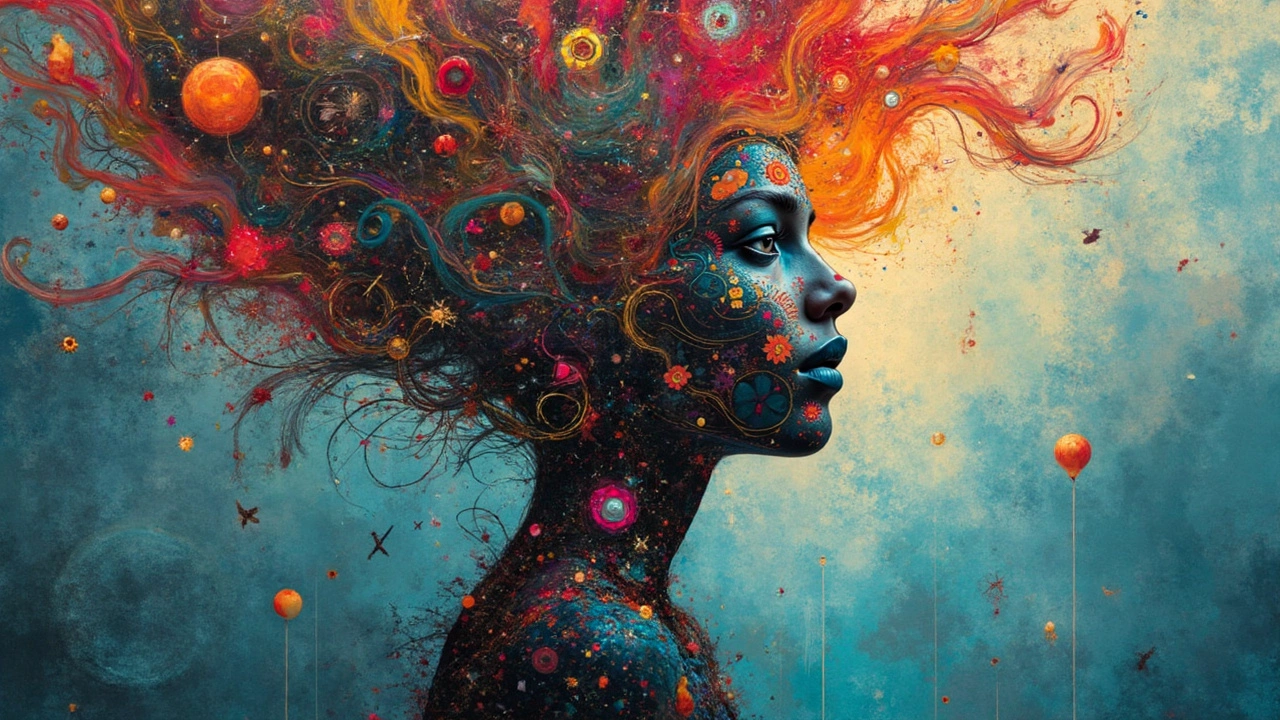Ever wonder what the rarest mental disorder is? It's not just a fun fact for trivia night—learning about it lets us appreciate the incredible diversity of the human mind. Rare disorders might not grab headlines like anxiety or depression, but they offer unique insights into how our brains work and what happens when things take an unexpected twist. Let’s delve right into it and see what the world of rare mental disorders can teach us.
Okay, so what makes a mental disorder 'rare'? It's not just about numbers. A disorder is usually considered rare if it affects less than 1 in 2,000 people. This rarity often means less research and fewer resources dedicated to it, making life challenging not just for those diagnosed but also for therapists trying to treat them. But don't worry, there are ways to manage and offer support, even if the road seems less traveled.
- Defining Rarity in Mental Disorders
- Intriguing Cases
- Challenges in Diagnosis and Treatment
- Supportive Approaches
Defining Rarity in Mental Disorders
When we talk about what's rare in the world of mental health, it's all about numbers. A mental disorder is generally tagged as rare if less than 1 in 2,000 folks have it. This isn't just a fancy label; it plays a big role in how doctors approach these conditions.
Why does rarity matter? Well, it affects everything from research to treatment options. Many rare mental disorders might not hit the spotlight like more common ones, meaning there’s less funding and fewer studies. This lack of attention can lead to challenges for professionals who are looking to develop therapies and treatments, and for patients seeking support.
Some rare mental disorders that stick out include Stendhal Syndrome, Alien Hand Syndrome, and Cotard Delusion, where people think parts of their body belong to someone else, or worse, believe they're dead! These are just snippets of how fascinating and complex these conditions can get.
When we understand rare disorders, we get a window into the extreme ends of human experience. Even if the numbers are small, they tell unique stories about how diverse our minds can be. And as mental health awareness grows, more people are becoming curious about these lesser-known challenges, which might boost research and support over time.
It’s also important to focus on early and accurate diagnosis. This can be tricky since symptoms might overlap with more common conditions. Recognizing what makes a disorder unique is key in providing the right help.
Intriguing Cases
Diving into the realm of rare mental disorders can be like exploring uncharted territory. Take Cotard’s Syndrome, for example. Also known as 'Walking Corpse Syndrome,' this rare disorder makes people genuinely believe they are dead or don’t exist. Weird, right? And while it might sound out of a sci-fi movie, it's real for those who experience it.
Then, there's Alice in Wonderland Syndrome. The name itself is intriguing. This disorder changes your perception of your size and distance; kind of like Lewis Carroll's famous story but minus the talking animals. Imagine feeling as if you're shrinking or things are closer or farther than they really are. Fascinating, yet likely scary, especially for kids who may not understand what's happening.
Don't forget about the rare Apotemnophilia—a disorder where people have a passionate desire to amputee a healthy limb. It's controversial and often misunderstood because it strikes at the core of identity and body image issues.
Here's a table highlighting some of these rare disorders and their key characteristics:
| Disorder | Key Characteristic |
|---|---|
| Cotard’s Syndrome | Belief of being dead or nonexistent |
| Alice in Wonderland Syndrome | Distorted body image or perception |
| Apotemnophilia | Desire for limb amputation |
These cases show just how varied our mental landscape can be. And while these disorders are rare, each case provides valuable lessons for mental health therapy. It turns the rare into an opportunity for innovation in treatment approaches, targeting very specific needs. This sector, while small in number, challenges mental health professionals to be creative and resourceful.

Challenges in Diagnosis and Treatment
Diagnosing a rare mental disorder can be like finding a needle in a haystack. With so few cases popping up, even seasoned mental health professionals might not immediately recognize the symptoms. One big hurdle is the overlap of these symptoms with more common disorders. For instance, signs of a rare condition might be mistaken for depression or anxiety, making accurate diagnosis tough.
Another challenge is the lack of standardized diagnostic tests. When it comes to rare disorders, clinicians often rely on a trial-and-error approach, starting with more common treatments before narrowing it down. This method can be frustrating and time-consuming for both patients and therapists.
Treatment options are also limited. Because big pharmaceutical companies focus on common disorders, medications specifically targeting rare conditions are hard to come by. Patients might end up using off-label treatments, which aren't specifically approved for their disorder but may help manage symptoms.
Support therapy plays a crucial role too. Since medical treatment isn't a one-size-fits-all solution here, a combination of therapies is often recommended. This could include cognitive-behavioral therapy, support groups, and educational programs for both patients and their families. Here, the emphasis is on adapting standard techniques to meet the unique needs of those with rare disorders.
One step forward is increased awareness and research. The more people know about these conditions, the better the chance of developing effective treatments. Researchers have increasingly turned their focus toward rare disorders in recent years, but we're just getting started on understanding and effectively treating these intriguing and challenging conditions.
Supportive Approaches
So, how do we deal with a rare mental disorder? It's not always straightforward, but there are ways to help people navigate their unique mental health journeys. While medication might be part of the solution, therapy often plays a crucial role. For rare disorders, personalized therapy is essential. It's about finding what works for each individual, even if the path looks different from well-trodden roads.
One effective approach is cognitive behavioral therapy (CBT). It’s a flexible tool that therapists adapt to suit rare conditions. The beauty of CBT is in its adaptability, allowing therapists and patients to work together in identifying specific challenges and goals. But where do you start when the challenges are as unique as snowflakes?
"Therapy extends beyond just addressing the symptoms. It’s a journey of understanding one's mind and nurturing self-compassion," says Dr. Alicia Marks, a clinical psychologist specialized in rare mental health cases.
Creating a support network is also significant. Encouraging family involvement and peer support can make a huge difference. Everyone needs a tribe, right? Connecting patients with support groups, even online ones, offers a space where people understand similar struggles.
Another tip is education. The more a person knows about their condition, the better they can manage it. Hand in hand with professionals, individuals can become their own best advocates. Resources like webinars, books, and workshops tailored to their specific needs are invaluable.
Lastly, let’s talk about lifestyle changes. Nutrition, exercise, and mindfulness aren't just buzzwords; they can influence mental well-being positively. A balanced diet, regular physical activity, and stress-reducing practices can complement therapy, enhancing overall treatment effectiveness.
- Nurture a balanced diet: Consuming nutritious food fuels both body and mind.
- Exercise regularly: Physical activity releases endorphins, lifting mood and reducing stress.
- Practice mindfulness: Techniques like meditation help in managing stress and increasing focus.





